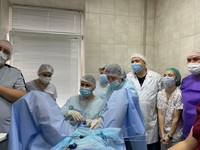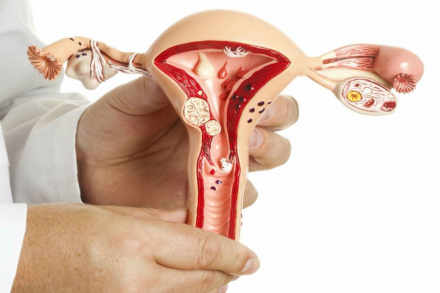

















Urinary incontinence
What is stress urinary incontinence?
Stress urinary incontinence is a condition in which involuntary urine leakage occurs during physical activity due to increased intra-abdominal pressure. Actions such as coughing, sneezing, laughing, lifting heavy objects, or physical exercise can trigger unpredictable and uncontrolled urine leakage.
Causes of Stress Urinary Incontinence
Stress urinary incontinence occurs due to weakened or damaged muscles and ligaments that support the bladder and urethra.
The main causes may include:
- Childbirth: Stretching and injuries during childbirth can weaken the pelvic floor muscles.
- Menopause: A decrease in estrogen levels can affect the strength of the pelvic floor muscles.
- Surgery: Pelvic surgeries can damage supporting structures.
- Age: With age, muscles and ligaments lose elasticity.
- Obesity: Excess weight puts additional pressure on the bladder.
The most effective treatment for stress urinary incontinence in women is sling surgery.
Preparation for the Procedure
Before the procedure, several tests are needed to assess overall health:
- Complete blood count with formula
- Biochemical blood test
- Rh factor and blood type
- Coagulogram
- Blood glucose
- General urinalysis
- Consultation with a therapist + ECG, dentist consultation (to exclude any loose teeth)
- Chest X-ray (if the previous one was done a year ago)
- Consultation with relevant specialists if there are chronic diseases (e.g., endocrinologist for diabetes, pulmonologist for asthma, etc.)
Anesthesia Methods for Classic TVT-o Surgeries:
- Intravenous anesthesia (without intubation)
- Spinal anesthesia (SMA)
Hospital Stay Duration: 0-1 days
Postoperative Period
- Typically, the patient gets out of bed 3-4 hours after surgery.
- Eating and drinking can begin on the day of surgery.
- Normal lifestyle resumes the next day with limitations on physical activity (sports) for 2-3 weeks.
- Sexual activity can be resumed 1-1.5 months after surgery.
- No dressings are required.
- Follow-up visit with the surgeon after 1.5 months to discuss the results of the surgery and conduct an examination.
What is Normal After This Surgery:
- Moderate discomfort in the perineal area during urination.
- A slight increase in body temperature up to 37.5°C, sometimes higher, especially if the temperature only rises in the evening and is managed by paracetamol 500-1000 mg.
- Slight abdominal bloating, constipation, or diarrhea in the first few days after surgery.
- Mild weakness, drowsiness.
- Bloody vaginal discharge for several days to 3 weeks after surgery.
Stress urinary incontinence is a common problem that can significantly affect quality of life. If you are experiencing this condition, seek a consultation. There are many effective treatments that can help cure this condition.
We will discuss all questions regarding the surgery and the postoperative period during our meeting at the clinic.
You can view these and other surgeries on my YouTube channel.





